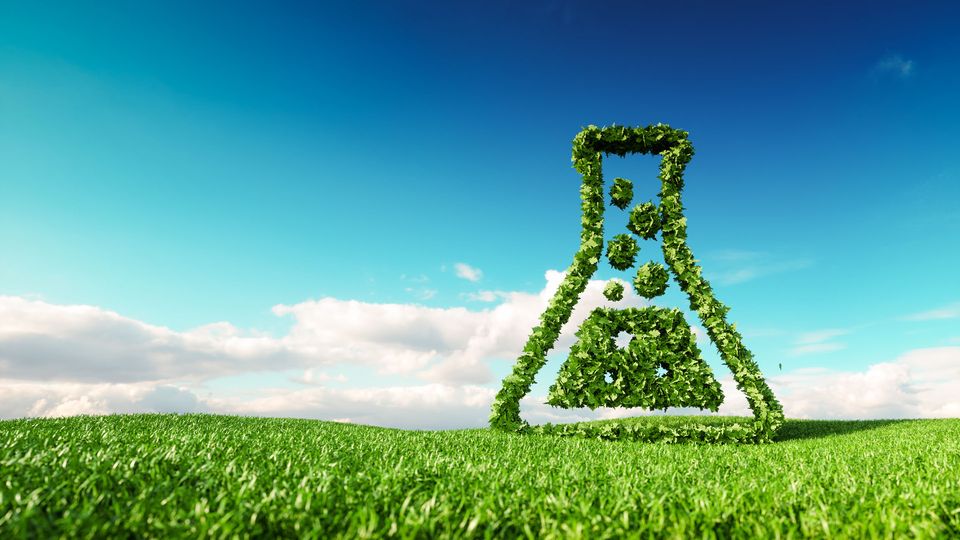Sustainability in Environmental Testing Labs: A Path Forward

Complete the form below to unlock access to ALL audio articles.
There are many different factors we must consider when we think about sustainability for laboratories. There is sustainability within the lab and laboratory methods, but there is also sustainability that happens outside of the lab that can still impact a lab’s efforts.
Sustainability is a very important area of focus and one that is only going to grow in importance as we move forward. Environmental testing labs have been at the forefront of this progress in sustainability, both in terms of what they measure directly, but also more indirectly by pushing for "greener" laboratory methods, faster throughput and the reduction of greenhouse gas emissions through their operations.
Ultimately, for environmental labs, the goal is not just to do testing and provide information. As an environmental lab, it is almost a sacred duty to make sure your practices are keeping the environment safe or even making it better for future generations.
Majority of environmental testing labs place focus on sustainability
In a new survey of analytical lab managers and other senior personnel, conducted by the international market research firm Frost & Sullivan on behalf of Agilent Technologies, 82% of environmental testing laboratories attested to having already adopted internal sustainability metrics. Of these, 93% had committed to reducing their greenhouse gas and carbon emissions, with 90% expressing a desire to manage their resource consumption more sustainably.
Within any lab, there are a myriad of things that can be done to improve sustainability. This can be done by instituting recycling programs and using less paper, for example, but it can also take the form of having a good relationship with suppliers, which allows labs more control over the lifecycle of their instrumentation, by seeing if parts can be shipped back and recycled instead of being sent to landfill.
Another aspect that labs can partner with their suppliers or analytical instrument providers is their development of analytical methods and assessing how these can be made more sustainable. This might mean using less solvent, doing less extraction, shipping fewer samples or reviewing how much time is spent doing manual versus digital work. For example, is it possible to automate your sample preparation? Can you reduce the time invested in evaluating data, so that your computer and instrument power usage is lower? These are the things that can be controlled by intentional analytical method development.
One area vendors have tended to overlook historically is the end part of an instrument’s lifecycle. Once that instrument is getting close to the end of its life and needs to be replaced, what can we do with it?
Outside of the laboratory room itself, there are other sustainability aspects for labs to consider. Is it possible to use reusable or recyclable packaging? Are your employees aware of the various sustainability initiatives you might have in place across your facility, such as waste management techniques?
Yes, the majority of labs (82%) have already adopted sustainability metrics, but it is important to recognize that there is always scope for improvement. And we do want to continue seeing these improvements.
Vendors can have a significant impact on lab sustainability
There are some sustainability aspects that the environmental testing lab will have less control over. For example, in terms of energy usage, greenhouse gas emissions and water usage, the analytical instrument vendor will have a greater amount of control.
According to the new survey results, 86% of environmental analytical testing labs say they look to vendors of analytical instruments to support their reduction of emissions, with around half of the labs also saying that vendors provide useful or influential information regarding sustainability goals and instrument- and product-related information.
From Agilent’s perspective, this is a role we take very seriously and there are many different things that we are looking at in terms of helping these labs. We are taking the entire lifecycle of our products, right from the beginning where we ship to customers, to ensure recyclable materials are being used in shipping. But we are also trying to develop analytical instruments that are inherently ‘greener’ for our planet, that use less energy and more sustainable materials during manufacturing and usage.
One area vendors have tended to overlook historically is the end part of an instrument’s lifecycle. Once that instrument is getting close to the end of its life and needs to be replaced, what can we do with it? This is one area where Agilent has been really proactive. For over ten years now, we have been offering certified pre-owned instruments. We are happy to take back instruments customers have used, refurbish them, and then cycle them back out into other labs that are willing to use certified pre-owned equipment.
Many of the environmental testing labs who responded to the survey indicated that they would be willing to pay some level of premium – on average, 5–7% above the cost of an instrument – to support an instrument recycling service.
This is one way for vendors to ensure less waste is being sent to landfill. So, having a good relationship with your vendors and asking these questions is another way for a proactive lab to ensure that they are making educated decisions to reach the most sustainable outcomes possible.
For laboratory managers and other senior organization personnel, it is also worth bearing in mind that a lot of sustainability initiatives can also drive better business outcomes for a lab.
Vendors can also support labs in their sustainability goals by making information on sustainability topics more accessible. We report sustainability metrics widely on our website and we also highlight specific sustainability achievements for particular pieces of instrumentation. During face-to-face meetings and at conferences, sustainability is a key topic of focus. Customers are also reporting to us that when they go out with their peers, sustainability is an area where there is a real effort being made to build up that education.
This topic – information and preferred information channels – is another area that was highlighted in the recent survey. Among environmental testing labs, 69% reported using face-to-face meetings and presentations to get more information on sustainability, with 57% using live events, 49% websites and 43% routinely using online or virtual meetings as an information channel.
The way forward for sustainability in environmental testing labs
Around 70% of the surveyed environmental testing laboratories that have adopted sustainability metrics report feeling satisfied with their successes in meeting their sustainability goals.
Sustainable analytical method development plays a significant role in the actions being taken by testing labs to improve their sustainability metrics. To support this, Agilent has been working with regulatory organizations, standards and consensus bodies on the environmental side of things – like the Environmental Protection Agency (EPA), ASTM International, and others – to help facilitate the development of greener methods and methods that make more use of automation, in addition to developing newer analytical instrumentation that uses less energy. This is in addition to internal research & development efforts that constantly strive to develop better & more efficient analytical instrument but now also have an ‘environmental sustainability’ component taken into account.
Another of the most important drivers towards meeting sustainability targets is having an operational mindset that encourages the pursuit of improved sustainability. For laboratory managers and other senior organization personnel, it is also worth bearing in mind that a lot of sustainability initiatives can also drive better business outcomes for a lab. Pushing to improve analytical methods and use less solvent, for example, can cut down on costs and waste. Similarly, faster analytical methods will often improve the overall throughput of a lab.
Currently, 84% of environmental testing labs report not using consultancy services for sustainability. But we believe this is an area that will grow in the future. Looking at the survey results, many labs are willing to pay some level of premium for sustainability and recycling outcomes, and labs will want to make sure they are making the right decisions. In the future, sustainable consultancy is likely to grow within these labs with time.
Some aspects of improving sustainability will need to be driven forward by an organizational focus within a given lab; 78% of labs report that they already have a director or head of sustainability who is responsible for spearheading sustainability efforts within their organization. Other aspects can be taken up by vendors, who are looking to support these labs’ efforts. Ultimately, when sustainability becomes a priority from the top down, this will help to move a lot of people towards asking questions of their suppliers and vendors and instituting new policies, which will collectively help to bring about more sustainability within this sector.
About the author
Tarun Anumol, PhD, serves as the Global Environment Market Director at Agilent Technologies. His areas of specialization include water treatment, environmental monitoring, and advanced analytical chemistry. Before joining Agilent, Tarun earned his PhD in Chemical & Environmental Engineering from the University of Arizona.




